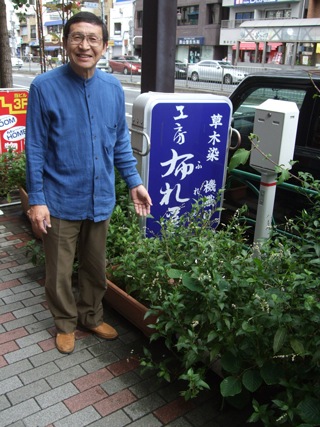The Human Flower Project reports on a DIY indigo-dyeing shop in the heart of Tokyo. A fine idea, for all sorts of reasons. It puts people in touch with a natural, plant-based dye and offers us a chance to talk about agricultural biodiversity and even plant biochemistry.
The Human Flower Project’s page shows a photograph of the source of indigo labelled Polygonum tinctorium, also known as Chinese indigo. I fondly remember visiting an indigo demonstration dyer near Toulouse, in France, that sourced the dye from woad, Isatis tinctoria. And then there’s the Asian (or true, sic) indigo, Indigofera tinctoria. Native American tribes apparently used other legumes closely related to true indigo for their blue dyes.
What they all have in common is the process to get the colour. Young leaves are mashed with water and then encouraged to ferment. That results in a greenish sludge. The fabric is immersed in the sludge and then hung up to dry. As the pigments oxidize, they turn blue, and expert dyers can control the shade of blue by adjusting the duration of the oxidizing step, and other factors. (Loads more information here.)

It struck me that indigo would make a marvellous central topic for one of those the-entire-history-of-the-universe-as-seen-through-a-single-neglected-thing books. There’s revolt and revolution, trade wars, the origins of modern organic chemistry, mercantile colonialism, slavery and rice, and pretty colours. Kew contibuted its model of an indigo factory to the BBC’s history of the world in 100 objects, but the model does not seem to have been the subject of one of those wonderful broadcasts. A pal of mine did a book on madder, another brilliant dye; I couldn’t find anything similar for indigo (although there is plenty of woo). Publishers! I am available.
See “Indigo”
by Jenny Balfour-Paul
pub 1998
ISBN 0 7141 1776 5
264 pages
pub by British Museum Press
As one might expect from today’s dumbed-down UK museums, this excellent book has disappeared from their list without trace See http://www.britishmuseum.org/
Richard H